Issue, verify and monetize
digital ID credentials
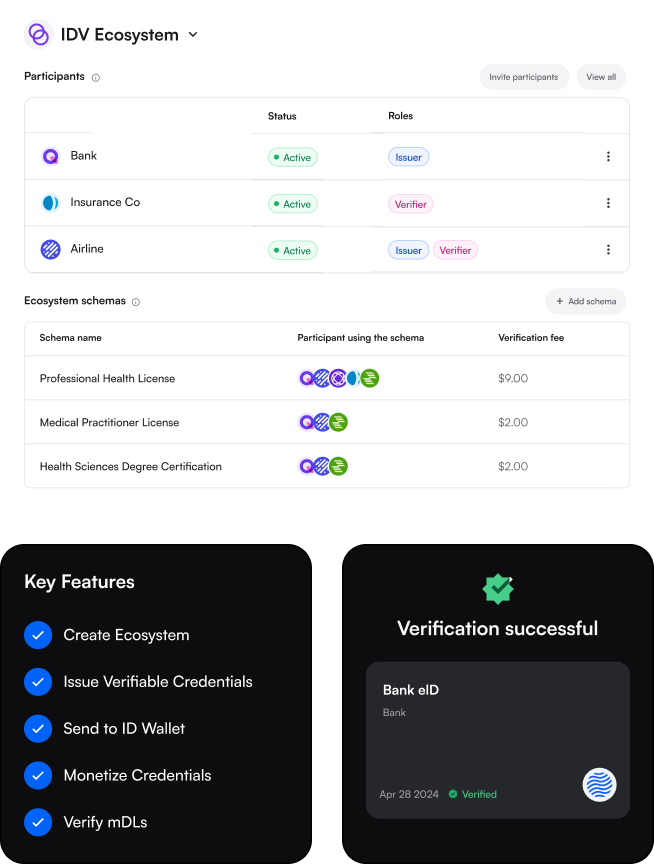







.png)

Unlocking value across industries
Integrating Decentralized ID technology is not about displacing current offerings but enriching them. It easily integrates with existing services, leading to additional revenue streams without disrupting the established business model.
IAM: Connect Data Silos Across Systems
Enable user onboarding across multiple siloed IAM systems. Eliminate redundant onboarding without centralizing systems. Instantly recognize users across platforms for improved user experience and operational efficiency.

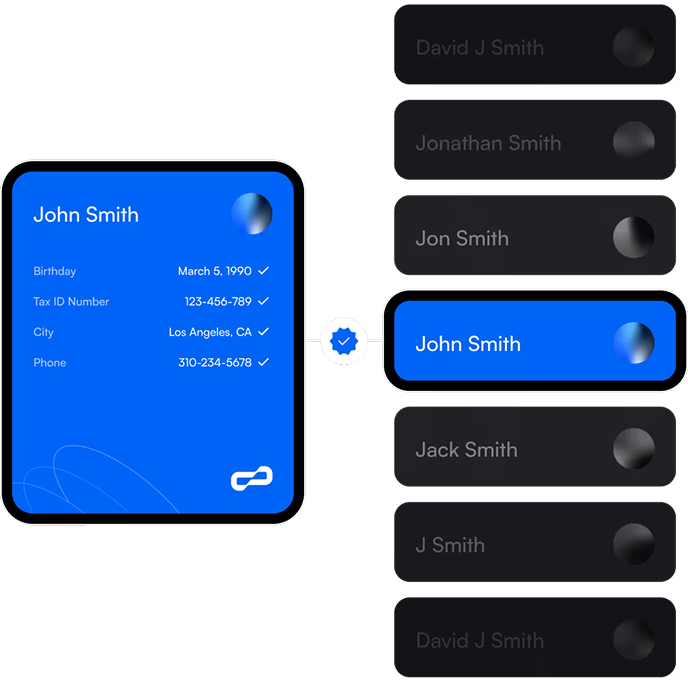
IDV Providers: Reduce Onboarding Friction
Quickly identify the exact person you're trying to verify across your clients. Enhanced customer data matching reduces onboarding friction, boosts conversion rates in your clients' acquisition funnels, and elevates your position in their KYC hierarchy.
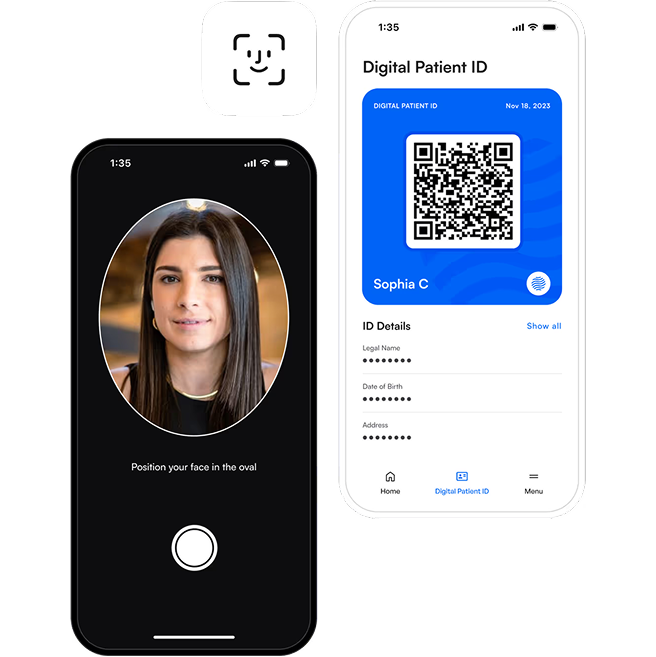
Bind Biometric Data to ID Credentials
Tying biometrics to verifiable credentials ensures the credential presenter is the original recipient. Verifiable credentials enable secure transfers without exposing sensitive biometric data, ensuring regulatory compliance.
Delegatable Authority
Verifiable credentials make delegation of authority digital, instant, and secure. Issue tamper-proof credentials that prove a person’s role, permissions, and organizational affiliation so you can trust every action they take.

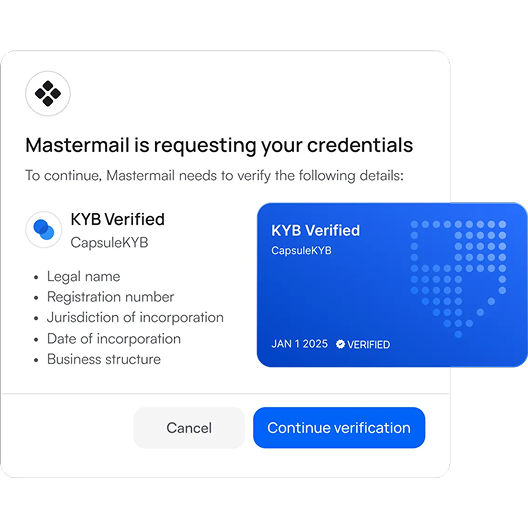
Reusable KYB
Know-Your-Business checks are essential but repetitive and costly. Each time a business applies for a service, they must resubmit registration papers, ownership structures, tax IDs, and licenses. Verifiable credentials change that.
Deploy 12x faster
Why build all the infrastructure yourself? With the Truvera API, you can integrate with your system and data sources to deploy your entire Decentralized ID solution up to 12 times faster than using open-source options.

The #1 Decentralized ID platform

Set up your ecosystem
Securely exchange data across multiple clients or siloed IAM systems without bespoke integrations. Invite your stakeholders into your ID Ecosystem, allowing users to present their verifiable credentials during onboarding with any of them. Enable seamless credential sharing without the complexity of building bespoke integrations for each stakeholder.

Verify government-issued digital IDs
Easily embed mDL (mobile driver's license) verification into your existing workflow to request more precise, government-issued identifiers. This ensures higher data matching accuracy during the verification process without the friction of requesting the submission of physical documents.

Launch an ID wallet
Enable users with cloud wallets or integrate ID wallet functionality directly into your app using Truvera's robust Wallet SDK.

Issue Verifiable Credentials
When users complete their first ID verification, issue them a verifiable credential that identifies them. When that customer later onboards with one of your clients or systems, you can request the credential and instantly match them in your system, speeding up the verification process.

Monetize verifications
Truvera's verifiable credentials allow ID companies to generate revenue by charging each time a credential is verified within the ecosystem. This creates a new monetization stream while ensuring user privacy remains intact—credential issuers never know which specific user or credential has been verified.
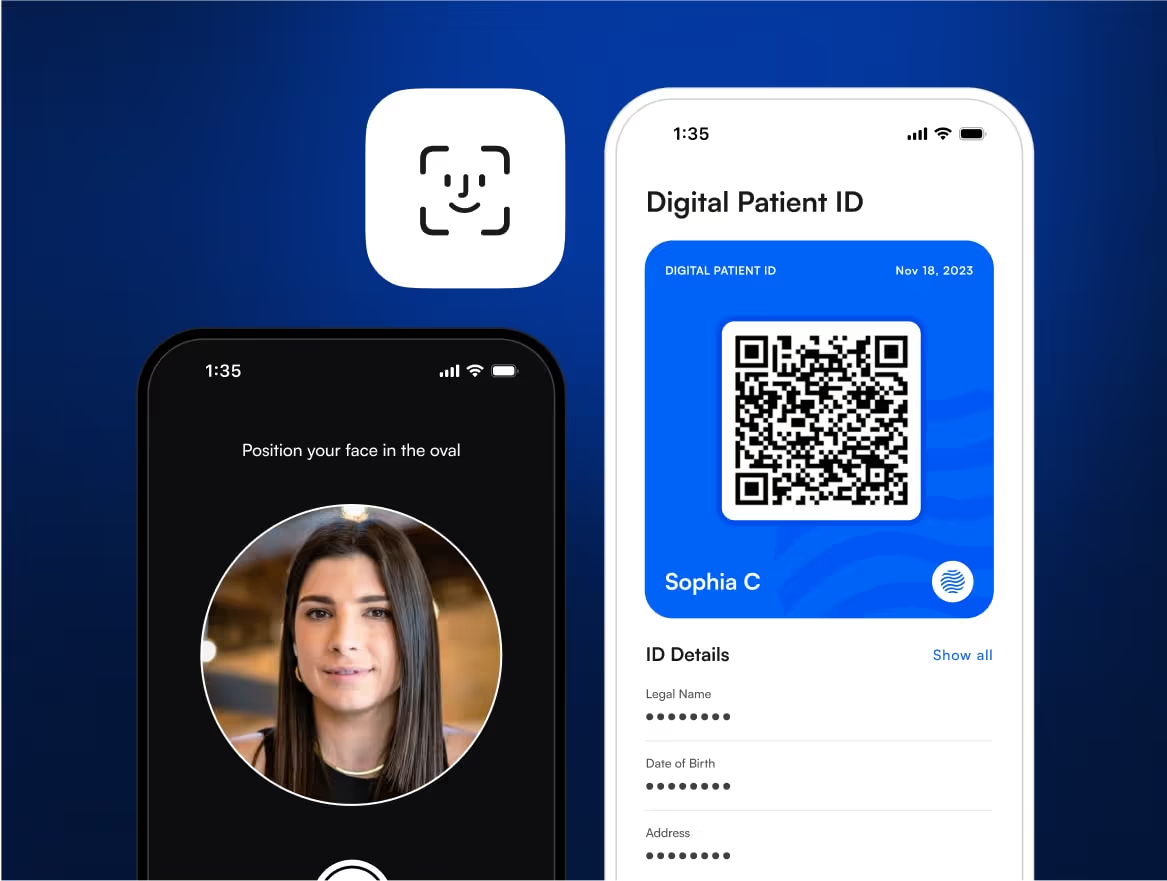
Biometric-bound credentials
Securely bind biometrics to credentials to ensure its holder is who they say they are.
Why choose Truvera?
Dock Labs is a leader in decentralized identity solutions, empowering businesses to launch ID ecosystems where their partners can create, share, and monetize verifiable digital credentials. The Truvera platform is designed to be easily implemented and scalable, allowing organizations to quickly deploy a decentralized identity solution with minimal development overhead.
REST API for core functions
Wallet SDK for wallet deployment
Developer-friendly integration
Create your first digital ID credential today
The Truvera platform helps you integrate reusable ID credentials into your existing identity workflows to support a variety of goals: reduce onboarding friction, connect siloed data, verify trusted organizations and customers, and monetize credential verification.





